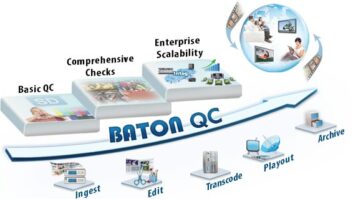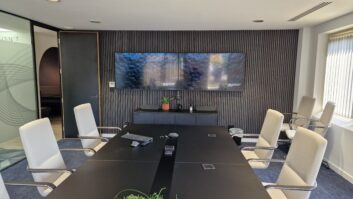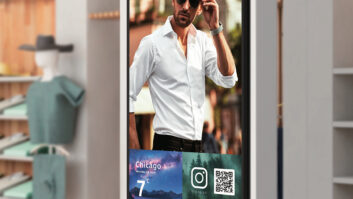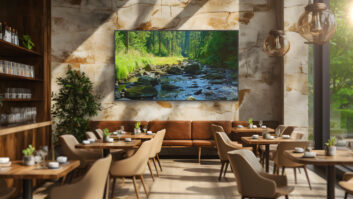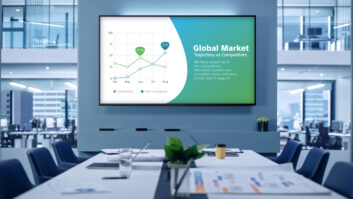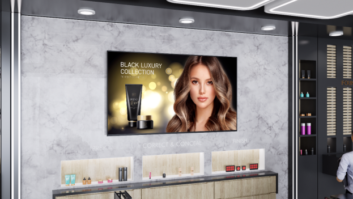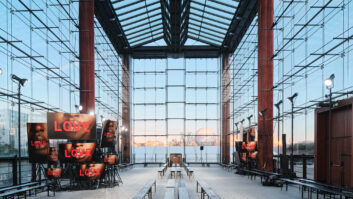 Sony celebrated its 11th successful ISE this year. How was it for you?
Sony celebrated its 11th successful ISE this year. How was it for you?
It was a great show for us, we were pleased to see a thriving AV sector with growing numbers at the show and a huge range of innovation and creativity on display. We were able to reconnect with many of our customers and partners following the pandemic and showcase our latest products and vision. Displaying stunning images on our Crystal LED display at the front of the stand drew in the crowds, while inside the stand our sustainability wall and virtual production studio proved popular.
It was clear from the Sony booth that sustainability is a big focus for you. What is Sony doing to support a more sustainable future in the AV industry?
Sustainability is at the heart of everything we do at Sony. We’ve committed to net zero by 2040 and using 100% renewable energy by 2030, a clear statement that we’re committed to taking action not just making statements. We’ve already started taking steps to make our products more sustainable, such as by using SORPLAS, a plastic made of 99% recycled material and by reducing the size and amount of ink on packaging.
AI was a big focus at ISE this year, how is Sony advancing in this area?
Our new SRG cameras the A-40 and A-12 contain AI auto tracking and auto focus, making them semi-autonomous. This is great for corporate environments where hybrid meetings are common, AI can frame and focus naturally on whoever’s speaking in a meeting and follow them as they move around. It’s also more cost efficient than employing camera operators.
Cameras like these make meetings more engaging and productive without being intrusive, as they can be easily installed on ceilings. They also create new and exciting filming angles, even in a space-limited environment. This is a really exciting area for us so keep your eyes peeled for more from Sony in this space.
We saw your new BH-series Crystal LED make its debut at the show. With this new introduction where is Sony heading in the display market?
As the crowds around our displays at the show demonstrated, they are becoming more popular, especially as they decrease in price, become more energy efficient and we continue to evolve our solution to be more than just a screen. Within our BRAVIA 4K pro displays, we will be continuing to offer compatible software solutions for additional power, creative freedom and enhanced capability.
Our new immersive Crystal LED CH and bright and rich BH models are cheaper, brighter, and more efficient than before. This technology is only improving so expect to see more models with a range of purposes in the future.
There’s been a trend recently towards using large displays including Sony’s Crystal LED for virtual production, where large displays are used as backgrounds on virtual sets to avoid on location filming. This will only grow in the future as a cheaper, more sustainable, and time-efficient way of filming. Sony recently opened the first virtual production studio in Europe in Paris, which has already gained lots of traction.
Can you give us a flavour of what display partners you’re working with and how these benefit customers?
We’ve always believed that collaborating with others is the way to create the best products for our consumers, now we have more partnerships than ever across a range of areas. We’ve collaborated with Kramer so their BRAINware application can be installed on Sony BRAVIA 4K professional displays, creating a complete room control system without the consumer having to buy expensive additional hardware.
Joining up with signageOS, we’ve produced a connected digital signage and content management system framework, nearly doubling the compatibility of Sony’s displays to support for nearly 60 CMS options. Other companies we’ve built partnerships with include Crestron, Cisco, Navori, and Now Signage.
And finally, what do you see are the key trends coming up in the AV industry in the next few years?
Sustainability is the fundamental challenge facing industry. In AV I believe the focus will be on energy consumption, as many of our products are power hungry. At Sony we’ve reduced the power consumption of our Crystal LED displays whilst improving their signature brightness, I would expect others to follow. that trend.
Elsewhere AI is making waves across the industry, I think we’ll see more and more automation of cameras, especially PTZ’s for corporate environments as AI tracking and focusing technology improves and the demand for high quality images without large setups becomes more widespread.
